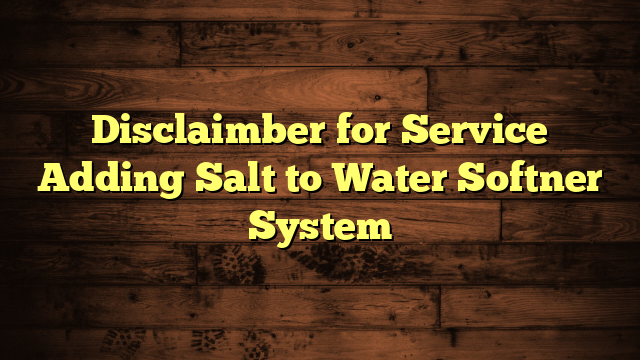How to Regenerate a Culligan Water Softner
When it comes to regenerating your Culligan water softener, it's crucial to understand the steps involved to maintain its efficiency. Start by checking the salt level in the brine tank and adjust the settings based on your water hardness. You'll need to initiate the regeneration cycle, but don't overlook monitoring the process for any unusual signs. After the cycle, there are critical maintenance tasks to perform that can greatly impact performance. Curious about what those tasks are and how to troubleshoot common issues that may arise?
Key Takeaways
- Locate the control panel on the Culligan water softener to access regeneration settings and start the process.
- Check the salt level in the brine tank and refill if it's below the recommended line for effective regeneration.
- Adjust the regeneration cycle settings based on your household water usage and hardness level for optimal performance.
- Initiate the manual regeneration process by following the instructions on the control panel if needed.
- Monitor the softener for any unusual noises or leaks during regeneration to ensure proper functioning.
Understanding Water Softener Functionality
A water softener is an essential household appliance that combats hard water issues, which can lead to scale buildup and damage pipes and appliances. Understanding how it works is key to maintaining your system and enjoying its benefits.
The primary function of a water softener is to reduce water hardness by removing minerals like calcium and magnesium.
You'll find several softener types available, including salt-based, salt-free, and dual-tank systems. Salt-based softeners use a process called ion exchange, where hard minerals are exchanged for sodium ions.
Salt-free systems, on the other hand, utilize a different method, like template-assisted crystallization, which prevents scale buildup without removing the hard minerals.
Identifying your water hardness level is vital, as it helps determine the right type of softener for your home. Testing kits are readily available to check your water's hardness, enabling you to make informed choices.
With the right understanding of how your water softener functions and the types available, you can effectively address hard water problems, ensuring your plumbing and appliances remain in good shape for years to come.
Signs Your Softener Needs Regeneration
If your water feels gritty or leaves behind residue, it's a clear sign your softener might need regeneration. Regular monitoring of softener performance is vital for maintaining water quality. Here are some indicators to look for:
| Sign | Explanation | Action |
|---|---|---|
| Gritty Water | You may notice a sand-like texture in your water. | Check softener settings. |
| Residue on Dishes | If you see spots or film on glassware, it's a sign. | Consider regeneration soon. |
| Soap Doesn't Lather Well | If soap feels ineffective, your softener may be struggling. | Test regeneration frequency. |
Each of these signs suggests that your softener isn't functioning at its best. Ignoring them can lead to increased hardness in your water, which could affect everyday tasks. If you're experiencing any of these issues, it's important to act promptly. By keeping an eye on these warning signals, you can guarantee your water softener runs efficiently for a longer time, reducing the need for frequent repairs and replacements. Pay attention, and your water will thank you!
Gathering Necessary Supplies
Before you start regenerating your Culligan water softener, you need to gather a few essential supplies.
Make certain you have the right tools, select the appropriate salt type, and don't forget about safety equipment.
Having everything ready will streamline the process and guarantee you do it safely and effectively.
Required Tools Overview
To successfully regenerate your Culligan water softener, you'll need a few vital tools to make the process smooth and efficient.
Start your tools checklist by gathering a bucket or large container to hold the brine solution you'll prepare. This is critical for collecting any excess water during the regeneration and ensuring a clean workspace.
Next, you'll want a measuring cup to accurately gauge the salt you're using. Precision matters, as too much or too little can affect your softener's performance. A funnel can also be helpful for pouring salt into the brine tank without creating a mess.
In addition, have a pair of gloves on hand to protect your skin from the salt and any cleaning agents you might use. A sponge or cloth will come in handy for wiping down the softener's exterior and keeping things tidy.
Lastly, consider a screwdriver, as you may need it to access certain parts of the softener during the process.
With this vital equipment gathered, you'll be ready to proceed confidently with the regeneration of your Culligan water softener.
Salt Type Selection
Choosing the right salt for your Culligan water softener is essential for peak performance. You've got several options, each with its unique benefits. Two popular choices are rock salt and potassium chloride. Rock salt options are often more affordable and provide a straightforward solution for softening water. However, potassium chloride benefits include being a more environmentally friendly choice and gentler on your plumbing.
When selecting the right salt, consider the following:
| Salt Type | Cost | Benefits |
|---|---|---|
| Rock Salt | Low | Easy to find, economical |
| Potassium Chloride | Moderate | Eco-friendly, gentle on pipes, no sodium |
| Solar Salt | Moderate to High | High purity, less residue, effective |
Ultimately, the choice depends on your budget and personal preferences. If you're concerned about sodium intake, potassium chloride might be the way to go. On the other hand, if you're looking for a cost-effective solution, rock salt options can do the job. Whichever you choose, make sure you stock up on the right type to keep your water softener running smoothly!
Safety Equipment Needed
When you're ready to regenerate your Culligan water softener, gathering the right safety equipment is a key step.
You'll want to guarantee your safety while handling the materials involved in the regeneration process. First, grab a pair of sturdy rubber gloves. These gloves protect your hands from salt and any other chemicals you might encounter. They also provide a good grip, making it easier to manage equipment.
Next, don't forget your safety goggles. These will shield your eyes from any splashes or debris that could occur during the process. It's crucial to keep your vision clear, especially when working with materials that can irritate or harm your eyes.
Additionally, you might want to think about wearing a mask to avoid inhaling any dust or residual particles. This is particularly important if you're working in a confined space or if you have sensitivities to allergens.
Setting Up the Regeneration Process
Setting up the regeneration process for your Culligan water softener is vital for maintaining ideal performance. You'll need to adjust the softener settings to match your household's water usage and the regeneration frequency you've decided upon. This guarantees your softener runs efficiently and prevents mineral buildup.
Here's a quick reference table to help you determine the appropriate settings:
| Setting | Description |
|---|---|
| Regeneration Frequency | How often the softener regenerates (e.g., daily, weekly). |
| Hardness Level | The specific hardness of your water (in grains per gallon). |
| Salt Dose | Amount of salt used during each regeneration cycle (in pounds). |
Adjusting these parameters correctly can make a significant difference in your water quality. If you're unsure about the hardness level, consider testing your water. Regularly check and update your settings based on changes in water usage or supply. By staying proactive with your Culligan water softener settings, you'll enjoy soft water while extending the life of your unit.
Initiating the Regeneration Cycle
How do you kick off the regeneration cycle for your Culligan water softener? First, locate the control settings on your unit. Depending on your model, you might find a dedicated regeneration button or a dial to set the cycle manually.
If you plan to set a specific regeneration timing, make certain the softener is programmed correctly to initiate the cycle at your preferred time.
To start the process, simply press the regeneration button or turn the dial to the regeneration setting. If your water softener has an automatic feature, it will automatically begin the cycle based on the settings you've programmed.
Check the display panel to confirm the cycle has started; this will indicate that your unit is now working to remove hardness minerals from the resin bed.
It's important to note that during the regeneration cycle, the softener will use salt to recharge the resin beads, so make certain you have enough salt in the brine tank.
Monitoring the Regeneration Progress
As you monitor the regeneration progress of your Culligan water softener, it's crucial to pay attention to the cycle indicators.
These indicators will help you understand when the unit is actively regenerating and when it's finished.
Furthermore, keeping an eye on your salt levels guarantees that your softener operates efficiently throughout the process.
Regeneration Cycle Indicators
What signs should you look for to monitor the regeneration progress of your Culligan water softener? First, pay attention to the regeneration frequency. Typically, your unit regenerates every few days, depending on your water usage and hardness levels.
When the softener runs through its cycle, you might hear a gentle humming or see the timer advance on the display. These subtle indicators tell you that the process is underway.
Next, observe the water pressure and quality in your home. A noticeable drop in water pressure can indicate that the system is actively regenerating. This momentarily decreased efficiency is normal during the cycle but should improve once regeneration completes.
Also, keep an eye on the time it takes for the regeneration cycle. If it starts taking longer than usual, it might signal an issue affecting softener performance.
Regularly monitoring these indicators not only guarantees your softener performs effectively but also helps you catch potential problems early. By staying aware of these signs, you can maintain the efficiency of your Culligan water softener and enjoy the benefits of softened water hassle-free.
Monitoring Salt Levels
To guarantee your Culligan water softener operates efficiently, keeping an eye on salt levels is essential.
Regular salt level monitoring helps confirm ideal salt usage, preventing issues that could compromise your system's performance.
Here are three key steps to follow:
- Check the Salt Level Monthly: Open the brine tank and visually inspect the salt level. If it's below the recommended line, it's time to refill.
- Use the Right Salt: Make sure you're using high-quality salt specifically designed for water softeners. This can notably improve the effectiveness of regeneration cycles.
- Monitor Frequency of Regeneration: Keep track of how often your softener regenerates. If it's doing so more frequently than usual, it might indicate that your salt levels are too low or that you need to adjust your settings for ideal performance.
Post-Regeneration Maintenance Tips
After regenerating your Culligan water softener, you'll want to take a few vital steps to guarantee it continues to operate efficiently.
First, conduct thorough post-regeneration cleaning. This involves checking for any salt residue or debris in the brine tank and the resin bed. Wipe down any surfaces to prevent buildup, which can hinder performance.
Next, review your maintenance schedule. Regular maintenance is essential for peak function. You should plan to check your system every month, inspecting salt levels, and confirming the unit is free from leaks.
Furthermore, keep an eye on the water quality; if you notice any changes, it might indicate a need for further attention.
Don't forget to replace the water softener filter as recommended, usually every six months. This helps keep contaminants at bay and preserves your system's efficiency.
Finally, consider documenting your maintenance activities. This not only helps you track your system's performance but also assists in identifying any potential issues early on.
Troubleshooting Common Issues
Several common issues can arise with your Culligan water softener, but many of them are easy to troubleshoot. By identifying the problem, you can quickly restore your system to peak performance. Here are three common issues you might encounter:
1. Troubleshooting leaks: If you notice water pooling around your softener, check the connections and the brine tank for cracks. Tightening fittings or replacing damaged parts can often resolve the issue.
2. Softener noises: Unusual sounds, such as gurgling or hissing, may indicate a problem with the regeneration cycle. Verify that the valve is functioning properly and that there's no air trapped in the system.
You might need to check the salt level, too; low salt can cause inefficient regeneration.
3. Soft water not reaching fixtures: If your water isn't softening as it should, inspect the resin tank for clogs or malfunctions. Running a manual regeneration can sometimes clear issues, but be prepared to replace the resin if it's exhausted.
Frequently Asked Questions
How Often Should I Regenerate My Culligan Water Softener?
You should consider your water hardness when determining regeneration frequency. Typically, regenerating every 7 to 14 days is effective, but adjust based on your specific water conditions and usage to maintain ideal performance.
Can I Regenerate During a Water Outage?
You can't regenerate your softener during a water outage. Without a water supply, the process won't work. Guarantee proper softener maintenance by timing regenerations when water's available, preventing issues with softening performance later.
What Type of Salt Is Best for My Water Softener?
When choosing salt for your water softener, consider rock salt vs. solar salt. Solar salt's purer and dissolves better, while rock salt's cheaper but can contain impurities. You'll want to select based on your system's needs.
Is It Safe to Drink Water During the Regeneration Process?
During the regeneration process, it's generally safe to drink the water, but it's wise to check water quality first. If you notice any changes, wait until the process completes before consuming it.
How Long Does the Regeneration Cycle Typically Take?
Like a clock winding down, the regeneration duration of a water softener typically takes about two hours. This process boosts softener efficiency, ensuring your water remains soft and your fixtures stay sparkling clean.
Conclusion
To summarize, keeping your Culligan water softener in top shape is a simple yet significant task. By regularly checking salt levels, setting the cycle correctly, and performing essential maintenance, you'll guarantee smooth, soft water flows through your home. Remember, a well-maintained water softener not only enhances efficiency but also extends its lifespan. So, don't delay—dedicate a little time to this important process, and enjoy the benefits of brilliant, balanced water every day!







